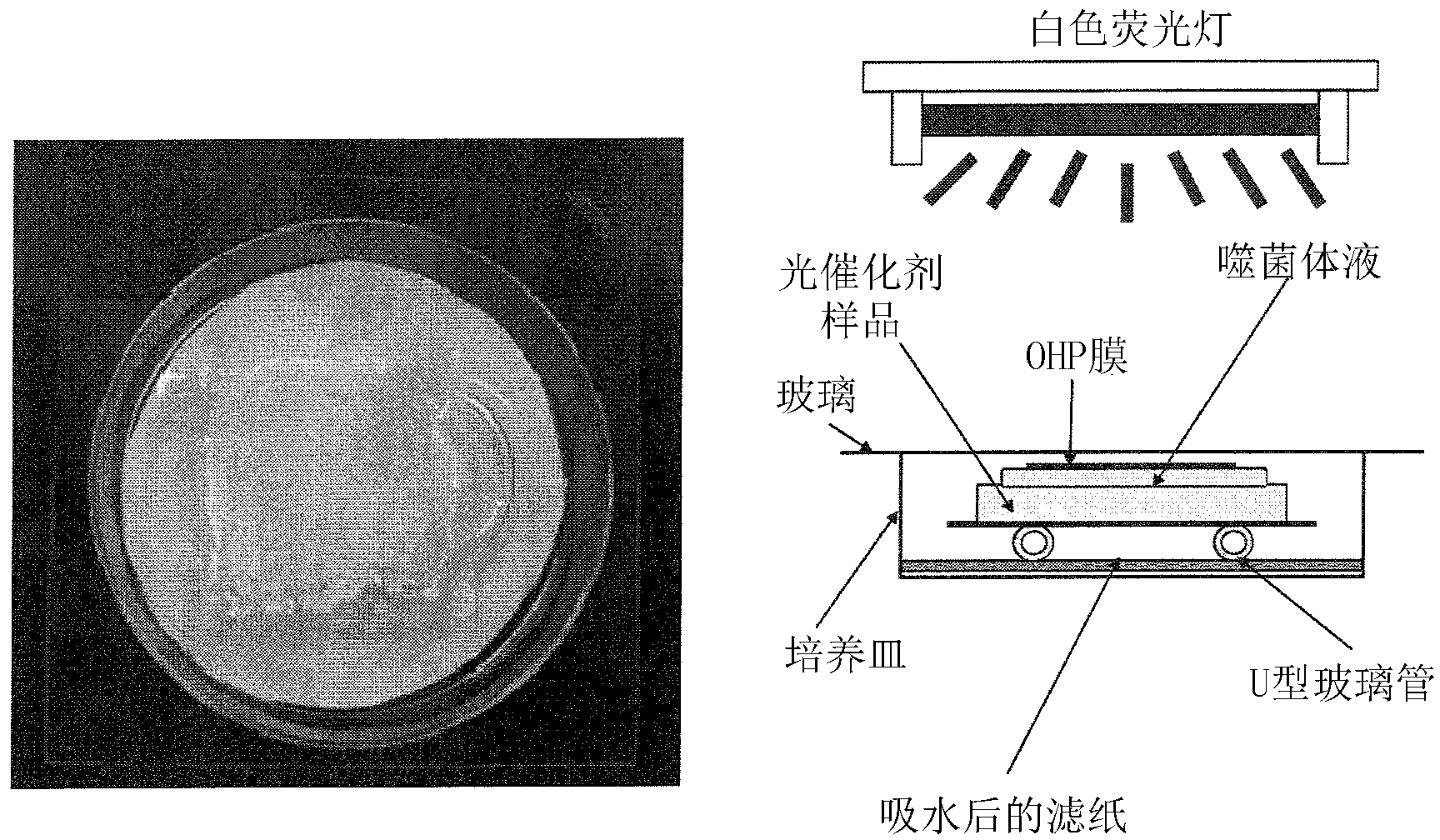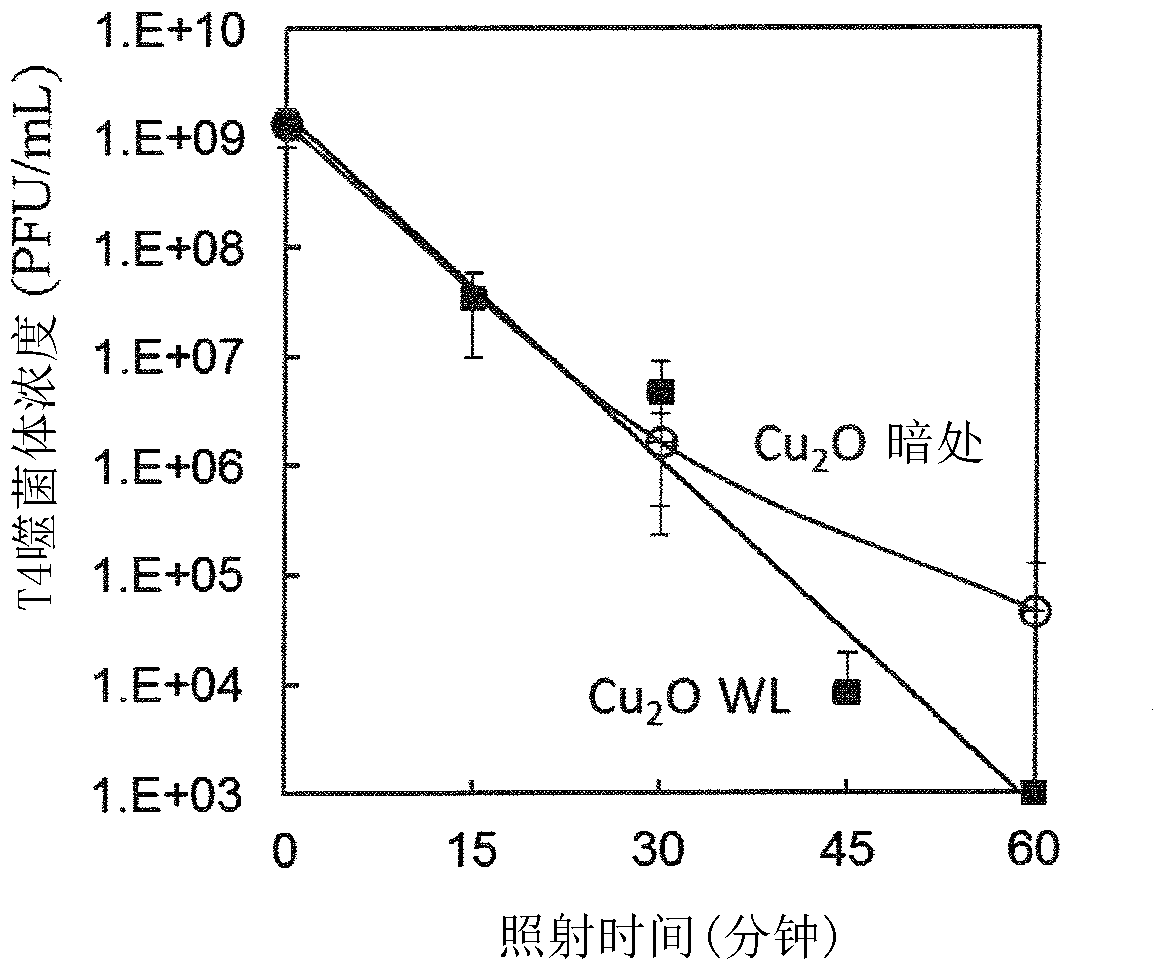Virus inactivator
A virus inactivation and photocatalyst technology, applied in the directions of disinfectants, biocides, animal repellents, etc., can solve the problems of undisclosed antiviral effects and inability to know the inactivation effects of monovalent copper compounds on viruses.
- Summary
- Abstract
- Description
- Claims
- Application Information
AI Technical Summary
Problems solved by technology
Method used
Image
Examples
example 1
[0087] Although the virus inactivation ability was also evaluated for influenza virus, it was mainly confirmed by the following method by a model experiment using phage. A method using the inactivation ability of phage as a model of virus inactivation ability is described in, for example, Appl. Microbiol. Biotechnol., 79, pp. 127-133, 2008, and it is known that reliable results can be obtained.
[0088] Cover a deep Petri dish with filter paper and add a small amount of sterilized water. Place a glass table of about 5 mm on the filter paper, and place a Cu-coated table on it. 2 O and other glass plates to be tested. 50 μL of a previously purified suspension of Qβ phage (NBRC20012) was dropped thereon, and the surface of the material was covered with an OHP film to bring the phage into contact. Cover the Petri dish with a glass plate. The same measurement set (measurement set) was prepared according to the planned number of measurements of the number of phages, and was left ...
example 2
[0093] The virus inactivation effect for T4 bacteriophage (NBRC20004) was studied in the same manner as Example 1. 2 O for 60 minutes of exposure, the concentration of T4 phage was reduced to 1 / 10 6 ( image 3 ).
example 3
[0095] Using A / PR / 8 / 34 (H1N1), which is an influenza virus, 12-day-old developing eggs were inoculated with a virus liquid, infected, and cultured at 35.5° C. for 2 days. After standing overnight at 4°C, the allantoic fluid (urine) was recovered, and subjected to microfiltration (removal of egg-derived contaminants) and ultrafiltration (removal of impurities and concentration of virus) to obtain a concentrated solution. The concentrate was purified by ultracentrifugation-based sucrose density gradient sedimentation velocity method (5-50% sucrose linear gradient, 141,000×g, 3 hours) to obtain high-purity virus fluid. In order to stabilize the virus, bovine serum albumin (BSA) was added as a stabilizer during the test.
[0096] Use the same method as Example 1 figure 1 The method shown confirms viral inactivation for influenza virus. Preparation of the loaded sample was carried out in the same manner as in Example 1. In the evaluation, a deep petri dish was covered with filte...
PUM
| Property | Measurement | Unit |
|---|---|---|
| Particle size | aaaaa | aaaaa |
Abstract
Description
Claims
Application Information
 Login to View More
Login to View More - R&D
- Intellectual Property
- Life Sciences
- Materials
- Tech Scout
- Unparalleled Data Quality
- Higher Quality Content
- 60% Fewer Hallucinations
Browse by: Latest US Patents, China's latest patents, Technical Efficacy Thesaurus, Application Domain, Technology Topic, Popular Technical Reports.
© 2025 PatSnap. All rights reserved.Legal|Privacy policy|Modern Slavery Act Transparency Statement|Sitemap|About US| Contact US: help@patsnap.com



